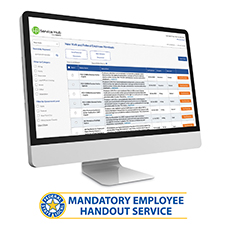
Employee salaries used to be a hush-hush topic, only to be discussed among upper management or on a need-to-know basis. But that is quickly changing due to new salary transparency (or disclosure) laws. Depending on the states in which your business operates, you may be legally required to disclose salary information under certain circumstances. And even when it’s not a legal obligation, your business may choose to pull back the curtain on pay ranges as a smart business practice.
The Current Status with Salary Transparency Laws
What is the legal climate surrounding these trending laws? As of January 2023, seven states require employers to share pay ranges externally (advertised job postings) and/or internally (promotions, transfers and upon request):
- California
- Colorado
- Connecticut
- Maryland
- New York
- Rhode Island
- Washington
The law’s reach depends on the state and other variables, such as the number of employees (e.g., four or more employees for employers in New York City).
Salary disclosure laws fall under the larger umbrella of pay equity, which involve “equal pay for equal work” gender fairness laws and salary history bans that prohibit employers from asking a candidate for their salary history (and, instead, clarifying salary expectations in the interview process). It’s a development that many workers support, especially when seeking a new job. In a recent Monster poll, 98% of workers stated they believe employers should divulge salary ranges in job postings, and 53% would refuse to apply for a job that doesn’t share this information.
But what does this mean for employers – and how can you best handle salary disclosure? At its core, salary disclosure laws are an important step toward pay equity, something every employer should be mindful of. Furthermore, it can help your business compete with other employers seeking similar talent, a critical factor in today’s tight job market. Job candidates are fully aware of the salary range upfront, which facilitates fairer negotiations and saves time in the hiring process.
Even if it’s not a legal requirement in your state, you’ll gain a competitive advantage posting salary ranges for new job listings. Today, job seekers expect this level of transparency.
Of course, with disclosure comes accountability. To enjoy the advantages of salary transparency, you’ll need to analyze salaries against industry benchmarks and adjust them, as needed. You’ll also need to involve managers in your commitment and adherence to fair pay practices. Specifically, you should:
- Review salaries regularly – Ideally, the salary for any given position should be based on skill/ knowledge level, impact and competitive market data. Clearly define roles and responsibilities, then use this market data to create a fair, objective pay structure.
- Correct problems as soon as they are discovered — For any salary discrepancies with existing employees, keep in mind that you may not reduce an employee’s pay to fix a pay differential. Rather, the wages of the underpaid employee must be increased, most realistically when the situation is identified or at the annual review.
- Be consistent and reasonable with advertised salary ranges — In the case of job openings, strive for a salary range that reflects your internal pay structure. Don’t be overly broad but, at the same time, allow room for varying skill and experience levels with potential candidates.
- Involve and empower managers — Encourage managers to have proactive salary conversations with employees, where they share the company’s dedication to fair and transparent pay practices. Managers should be prepared to answer questions about how salary ranges are set and why employees are positioned where they are.
- Keep abreast of new developments — Pay disclosure laws are expected to grow in the coming year, so even if it’s not a requirement in your state now, it may be soon. As more states adopt these laws, the requirements and coverage may vary.
A Balanced Approach to Pay Transparency in the Workplace
Remember: Pay transparency doesn’t mean every employee in the company knows what every other employee earns. Rather, it involves disclosing appropriate salary ranges for new hires – and providing clarity on pay decisions with existing employees as they arise.






 Shopping cart
Shopping cart













